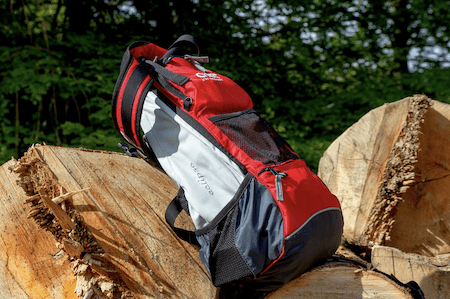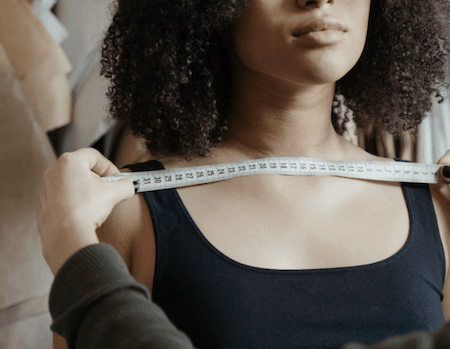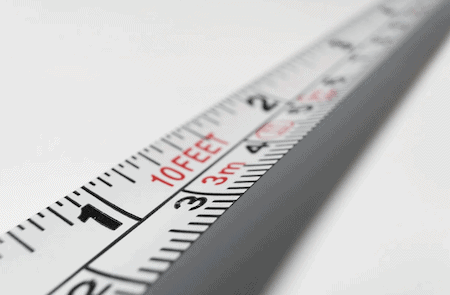Buying a new backpack is always exciting. The color, the smell, and everything fill your heart with pleasure and serenity.
But the issue rises when your stuff doesn’t fit in, so if you are experiencing the same situation, then you’re not the only American who has faced this problem.
However, while looking for backpacks, you should always focus on the dimensions, as they are the prime reasons to make you feel comfortable when you will be carrying the load on your body.
Knowing the overall size can help you decide what you can keep inside to have a smooth journey.
If you want to know how to measure backpack dimensions, you are in the right place.
So, glue yourself for a couple of minutes to have in-depth knowledge about the backpack’s length, width, and height.
Table of Contents
Importance Of Knowing Your Backpack Size
The right backpack size is a boon. Why?
It is because all the load you carry becomes less tiring. You can pack all the essential things in it and get ready to go on the tour.
Unfortunately, many people cannot enjoy their expedition, as they choose the wrong size, especially when it comes to dimensions.
And while they walk, run, or wear it, the backpack doesn’t fix their torso and keeps falling over their hips’ area.
As a result, the entire traveling becomes hectic, painful, and uneasy.
But, if you know the desired size, you can have a wonderful trip anywhere.
The Two (2) Ways Of Measuring Your Backpack
Some resources believe that measuring a backpack is only possible when measured in cubic inches, but this is just not the complete information.
You can assess your backpack in two ways:
- Backpack’s Volume
- Backpack’s Dimension
Backpack’s Volume
Your backpack volume defines the load capacity.
In other words, it tells you how many items you can keep inside the bag without any worry. You can measure the volume by understanding the ‘liter’ or ‘cubic inches’.
Nevertheless, the backpack volume is completely dependent on its size, and this is where you need to understand the dimensions.
Backpack’s Dimension
With the help of dimensions, you can quickly determine your backpack’s size and even calculate the volume if you know a few mathematics rules.
However, it is seen that many people get confused and consider height and length as one thing, which is untrue.
Measuring Yourself To Get The Right Dimensions
Before knowing how to gauge your backpack’s dimension, it is vital to understand your body structure and size.
So, to get the best backpack, you should know your torso, hip size, and waist.
-
Measuring Your Torso
The first and foremost measurement you should identify is your torso. But to do this, you might need a volunteer to get accurate measurements.
So, reach out to your family member or a friend to help you with this matter.
Tell the person to place a measuring tape, starting from your 7th cervical (C7) to the iliac crest. If you’re not sure where C7 is, then you should know that it is an area that’s below your neck and starting of the main spine.
You will have to keep your head in a downward direction until you feel the protruding bone that connects your neck with your shoulders.
Now, the volunteer has to keep the measuring tape on the C7 and on your hipbones’ top (that’s your iliac crest).
Ask your friend to keep his or her one thumb on the measuring tape’s one end and the other thumb where your iliac crest is.
The person should note down the total inches obtained after measuring the torso.
-
Measuring Your Hips
Once your torso’s length is noted, it is time to measure the hips, although most manufacturers design backpacks according to the waist.
So, the question is why measuring hips then? Well! Whenever you wear a bag, stuffed with your valuables, the backpack’s base gets heavier, resting on your hips, as gravity pulls things down.
So, in case the bag is too saggy on the hips, you will, for sure, feel unpleasant about it.
-
The Waist
While the waist is not as important as the two factors mentioned above, you should still measure it, and match the figures with your backpack’s hip strap.
Remember, if the strap is shorter or longer than your actual waist size, you won’t feel good about the grip.
If you are still confused on how to do it correctly, we have added a video at the end of the article, check that out.
Ideal Backpack Size According To Your Torso And Hips
Before going forward to learn about measuring your backpack’s dimensions, let’s find out some standard torso and hip sizes if you are planning to buy a bag in different sizes.
- Extra Small Size: If you are looking for an extra small backpack, try to get the one with a torso length of 16-inches and 22-inches from hips.
- Small Size: Buying a small backpack should have a torso length of at least 18-inches and hip size of about 27-inches.
- Medium Size: The torso length should be 19-inches and 34-inches of hips measurement.
- Large Size: Similarly, purchasing a large backpack should have a 20-inches torso length and 39-inches hip size.
- Extra Large Size: If you think you need an extra-large backpack, then make sure the torso length is approximately 20-inches, whereas, the hip size should be 43 to 45-inches.
Measuring the Dimensions of Your Backpack
Dimensions include length, width, and height (L x W x H) of any object, and assessing your backpack’s dimension is simple.
You just need a measuring tape to evaluate its L x W x H.
For instance, you have bought a 40-liter backpack, so on measuring the dimensions, you might find out that the length is 21-inches, width is 12-inches, and height is around 8-inches.
These figures are also written as “24 x 12 x 8”.
As you have read that some people are confused with dimensions, and they often mix the concepts. Therefore, always remember that ‘length’ is your backpack’s longest side.
It is measured by including your bag’s straps (vertically measured), whereas, the ‘height’ is the vertical measurement of your bag without straps.
The width can be determined by measuring the backpack from one side to another (horizontally measured).
So, if you’re buying a bag or have already purchased it, try your best to measure the correct dimensions, as it will help you get the right size.
Things To Consider When Buying A Backpack Of Right Dimensions
Measuring dimensions is a piece of cake, isn’t it?
But before spending on a backpack, there are some things you should assume to get a useful product.
Getting a new backpack is always thrilling, but many people don’t pay attention to the proportions and suffer the consequences later.
So, have a look at these four points below to prevent making errors.
-
Reason And Type Of Backpack
There are different types of backpacks for various purposes, so it gets a bit difficult to pick the right one for your voyage.
So, if you want a backpack for regular usage, you should look for day backpacks or daypacks.
Conversely, if hiking is your passion and you are always ready for adventurous trips, then big-size backpacks would serve you better.
Likewise, a duffle backpack appears to be supreme if you travel frequently and desire to keep things secret and odorless.
-
Packing Style
Your packing style can help you get the right dimensions. How?
Because if you prefer rolling your clothes and putting them inside, and stuff your consumable things above them, then you might need a bag with a broad width.
And if you’re an organized packer, then targeting tall bags can be a great option.
-
Things You’ll Be Carrying
Another reason why dimensions are important is that they can help you keep your things safely.
For instance, if you are to place electronic gadgets with a water bottle, then bags with increased length seems to be authentic, as they will have multiple compartments to store things.
Also, if you wish to have more room inside the backpack, then you should focus on bigger width and length bags.
In this way, you won’t find a mess every time you open the zipper to get the commodity you want.
-
Type And Duration Of Your Journey
Are you going on an adventurous journey or a spiritual expedition?
Or, are you planning a weekend trip with your friends?
These are some questions that will help you decide your backpack’s measurement, as the more risky trip, the more gears you would be packing.
Now imagine buying a backpack with insufficient dimensions. So, do you think you can crowd the bag with your shoes, socks, shirts, trousers, mobiles, laptops, camera, and food?
Not at all!
Instead, if you’ll forcefully load things inside, chances are your backpack will be torn from the bottom due to excessive weight.
That is why proper dimensions are necessary to have a safe and clean journey.
Otherwise, you will be into a lot of suffering, and then there’ll be no easy turning back.
Different Backpacks With Their Standard Dimensions And Volume
To make the process hassle-free, you can find some significant backpacks along with their standard measurements.
However, the information below can be different, as every manufacturer has a different size chart.
-
Daypacks
Daypacks are used for carrying everyday gear. You can use these bags for specific activities, such as hiking, traveling, or commuting.
These bags are mostly 22-inches in length, 14-inches in width, and 9-inches in height. Their maximum volume is 35-liters.
-
Weekend Backpacks
Weekend backpacks are made for short stays. If you are residing somewhere for like 2 to 3 days, then these bags can be remarkable.
Weekend bags are usually 19-inches in length, 13-inches wide, and 11-inches in height. The volume can be somewhere between 24 to 26 liters.
-
Multiday Backpacks
If you’re going to some warm areas for a few a week or more, then multiday backpacks will surely keep your things in their right places.
These backpacks are just a few inches more than weekend backpacks, and their load capacity is between 30 to 35-liters.
-
School Backpacks
School backpacks are not just confined to kids, but even college and university students use them daily.
So, finding the right dimensions depend on your usage. School bags start from 11-inches (height) and 6-inches (width) and go up to 25-inches in length and more.
The most common volume you will see in these types of bags are 20 to 30-liters.
-
Laptop Backpacks
Laptop backpacks are tricky as they are available both in vertical and horizontal styles.
But, the typical dimensions are 19 x 13 x 11 and around 10 to 16 liters capacity.
-
Tactical Military Backpacks
These backpacks are best for military deployment or long-distance hiking. Moreover, they come with external ports, earphones, radio antennae, and hydration bladder.
The approximate dimensions of military backpacks are 18.5-inches in length, 12.5-inches in width, 11.5-inches in height, and 42-liters in volume.
-
Drawstring Backpacks
Drawstring bags are used to keep essential items like hairdryers, glasses, and other small things.
That is why their volume is around 8 liters with 17-inches lengths and 13-inches widths.
-
Duffle Backpacks
Duffle backpacks are outstanding for carrying workout clothes, towels, water bottles, sports gear, and activewear.
Furthermore, these bags are convenient for holding electronic and general items, such as shampoo, deodorants, headphones, etc. But most importantly, they are smell-proof.
So, how big these bags are? Roughly, these bags are found in two common dimensions – 22-inches x 14-inches x 9-inches, and 22-inches (L) x 16-inches (W) x 8-inches (H), and have 30-liters of volume.
Conclusion
Finding a suitable and high-quality backpack is satisfying, but the problem begins when the bag comes in the wrong size.
There are many kinds of backpacks, and each type is produced in different sizes and volumes.
So, rather than blaming the manufacturers and crying over your lost money, it is wise to learn how to measure backpack dimensions on your own.
There is no rocket science; in fact, you just need a measuring tape to attain the length, wideness, and height of the backpack.




